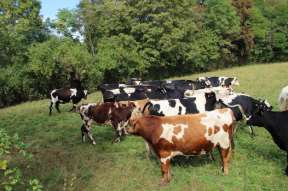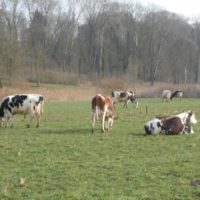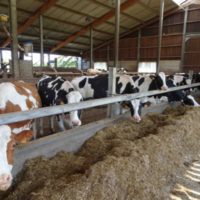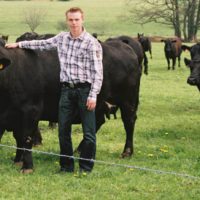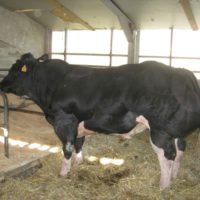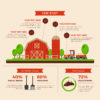Description
Background
The farm of the school of Pixerecourt has 280 ha of agricultural area The dairy herd is fed only with grass as frequently as possible. The pasture area is close to a river. It is possible to graze generally after the floods, at the end of march. In these conditions, the weight of a cow is a disadvantage for grazing because of the degradation of the grass cover. That’s why the farm manager has chosen cross-breeding: to reduce the weight of the cows and maximize their ability to graze.
Detailed description
The herd was only comprised of Prim’holstein cows until 2009. While creating rotational scheme for grazing, the farmer has begun cross-breeding.
Fistly he tryed with Montbeliarde and Normande, and now the breeds available on the farm are:
- Prim Holstein
- Montbeliarde
- Normande
- Jersiaise
- Rouge scandinave
For each cow, insemination is determined by the weakness of one of these characters:
- Milk productivity
- Milk quality
- Weight
- Health, especially the robustness of the legs
The pasture is divided in 26 paddocks of 1.5 ha. Cows stay on these paddocks between 1 and 3
days according to grass growth.
Results
The average weight of cows is decreasing to reach 500-530 kg. The management of pasture allowed decreasing the time of work of the employees.
Now, cows are producing 5300 kg milk/year/cow with 250 kg of concentrates, without silage of maize.
The aim is to maximize the production of milk relative to the live weight of the animal.
Perspectives and threats
One of the main difficulties of the innovation is to decide which breed to choose for crossing with each cow. There is no Help Decision Tool and no references of the results of each cross-breading.
To limit the low-productivity of grasslands in summer, the farmer tries to reseed chicory and plantain on the paddocks close to the building. Management of the chicory remains a difficulty, because of the fast past of the grazing stage.
The new farm manager is interrogating the abandon of maize, and will certainly cultivate it again.
Farm description
- 2.5 annual work units
- Dairy cows and sheep combined
- 75 dairy cows and 200 ewes
- Objective of productivity: 5300L /cows/year
- Two main soil types:
- Deep clay soil (50%)
- Sandy-loam (50%)
Climate
Climate is continental, with cold winter and warm summer. Rain are quite homogenous during the year excepted July and august witch are more dry and with thunderstorm. As for other regions, climatic hazards are more and more frequent and impact grasslands productivity. 2016 was a very rainy years. This amount of rains has impacted the quality of forage: the mows had to be report of 3 weeks at least as usual. 2017 was marked by a cold spring and a reduction of grass growth compared as a « normal year ». And to finish, the summer 2018 was warm and dry with a stop of grass growth since 1st July.

